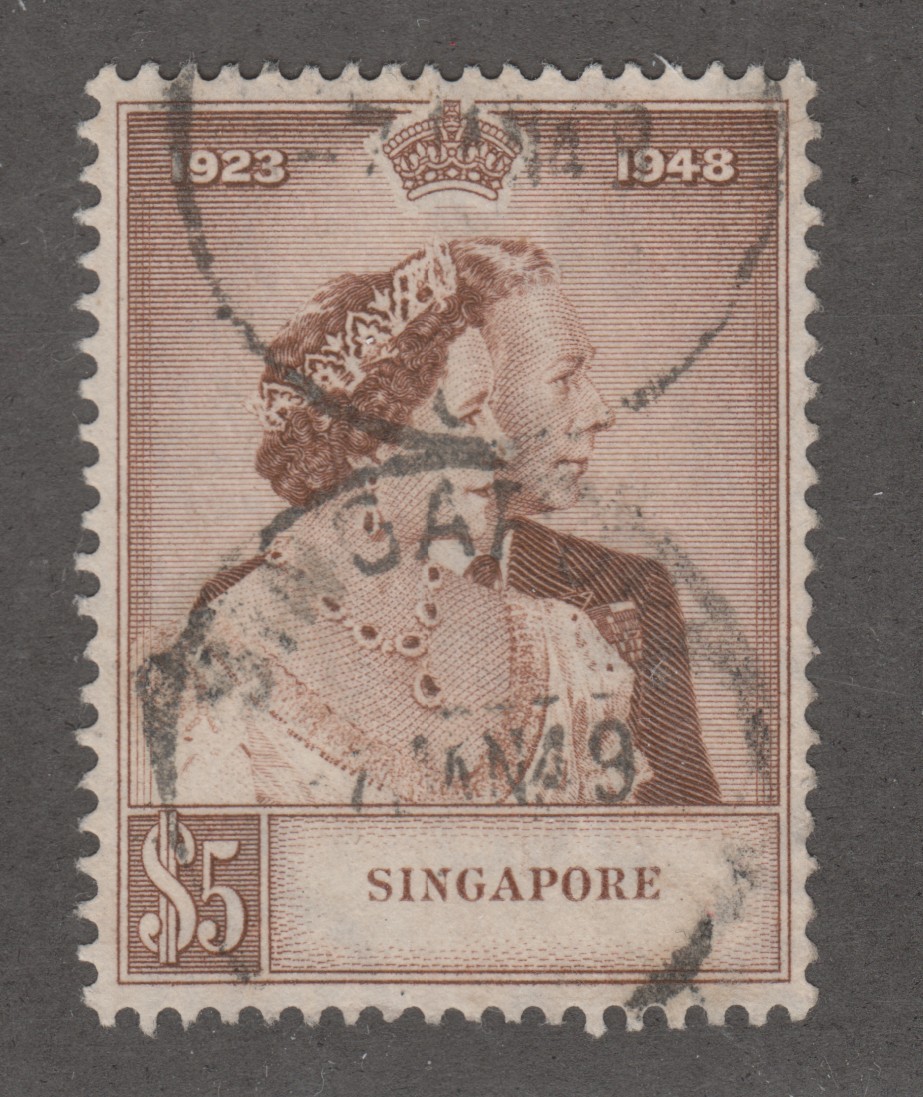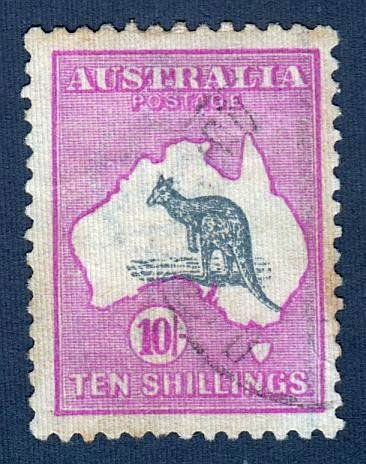
Discussion - Member to Member Sales - Research Center

Discussion - Member to Member Sales - Research Center


Thanks, and hope you all have a great weekend,
Paul.

Login to Like
this post
that special delivery stamp is poorly centered; the poor centering diminishes its value. Perfs cut into the design, exacerbating the problem.

Login to Like
this post
For an off-centre stamp to have a value greater than catalogue, the off-centring would normally include a portion of a nearby stamp or a large portion of the selvedge. Here's an example of one that recently sold for U.S. $45 in an auction (value of a normal single: 15 cents).

Bob

Login to Like
this post
Wow, the perforations sure missed that mark with that one Bob. Jus curious, about what time in history did US stamps start getting perforated by machine as opposed to being perforated by hand? Thanks,
Paul.

Login to Like
this post
According to Wikipedia:
"In 1847, Henry Archer constructed the first (rouletting) machine, the "Archer Roulette", to separate stamps. His plan, submitted to the Postmaster General on 1 October, 1847, was referred to the departments of the General Post Office and the Inland Revenue. Two such machines were built. After experimentation both machines proved to be failures. From one machine a few stamps from Plates 70 and 71 have survived. This machine consisted of lancet-shaped blades working on a fly-press principle and piercing the paper with a series of cuts.
Archer then abandoned this approach in favour of perforation, a process which used rows of small round pins to punch out the holes. In 1848 Archer patented his perforation machine which worked on the "stroke" principle. The arrangement of the pins enabled the top and sides of each stamp across the row to be perforated in a single operation, and this became known as "comb" perforation. Perforation trials were conducted in 1849 and 1850 under the auspices of the British Government and stamps from these trials were first issued towards the end of 1850. The Archer machine proved the viability of the process but never entered service. Archer's patent for his perforating machine (no. 12,340 of 1848, dated May 23, 1849) was purchased for £4,000 in June 1853. New machines based on Archer's principles were constructed by David Napier and Son Ltd; these were initially used in October 1853 for revenue stamps and from January 1854 for postage stamps."
This information is about British stamps. I don't know about the situation with American stamps.
Bob

Login to Like
this post
Bob's example shown would be known as a "misperf", not just off-center as the special delivery example is.
Randy

Login to Like
this post
Randy's not wrong. It's really a question of judgment. When does an "off-centre" stamp become a "misperf"? Here's what Alphabetily.org says:
""Misperforated" means a stamp has perforations, but they are so poorly aligned with the design that they constitute a production freak. The line between "poorly centered" and "misperforated" is somewhat a matter of personal judgment."
In any event, the reason I posted that image of the U.S. airmail stamp(s) was to illustrate what types of "off-centre/misperfed" stamps may be worth more than a stamp that is just badly centred.
Bob

Login to Like
this post
Thank you for the discussion and education Bobstamp and musicman. Most interesting reading, as usual.
Paul

Login to Like
this post

Greetings All. I found this stamp in my collection this evening. I have read about how certain stamps when not centered properly can be more valuable than ones that are well centered. Is this an example of such a stamp, one that is not centered properly?

Thanks, and hope you all have a great weekend,
Paul.

Login to Like
this post
Auctions
re: Off-Center Stamp
that special delivery stamp is poorly centered; the poor centering diminishes its value. Perfs cut into the design, exacerbating the problem.

Login to Like
this post

re: Off-Center Stamp
For an off-centre stamp to have a value greater than catalogue, the off-centring would normally include a portion of a nearby stamp or a large portion of the selvedge. Here's an example of one that recently sold for U.S. $45 in an auction (value of a normal single: 15 cents).

Bob

Login to Like
this post

re: Off-Center Stamp
Wow, the perforations sure missed that mark with that one Bob. Jus curious, about what time in history did US stamps start getting perforated by machine as opposed to being perforated by hand? Thanks,
Paul.

Login to Like
this post

re: Off-Center Stamp
According to Wikipedia:
"In 1847, Henry Archer constructed the first (rouletting) machine, the "Archer Roulette", to separate stamps. His plan, submitted to the Postmaster General on 1 October, 1847, was referred to the departments of the General Post Office and the Inland Revenue. Two such machines were built. After experimentation both machines proved to be failures. From one machine a few stamps from Plates 70 and 71 have survived. This machine consisted of lancet-shaped blades working on a fly-press principle and piercing the paper with a series of cuts.
Archer then abandoned this approach in favour of perforation, a process which used rows of small round pins to punch out the holes. In 1848 Archer patented his perforation machine which worked on the "stroke" principle. The arrangement of the pins enabled the top and sides of each stamp across the row to be perforated in a single operation, and this became known as "comb" perforation. Perforation trials were conducted in 1849 and 1850 under the auspices of the British Government and stamps from these trials were first issued towards the end of 1850. The Archer machine proved the viability of the process but never entered service. Archer's patent for his perforating machine (no. 12,340 of 1848, dated May 23, 1849) was purchased for £4,000 in June 1853. New machines based on Archer's principles were constructed by David Napier and Son Ltd; these were initially used in October 1853 for revenue stamps and from January 1854 for postage stamps."
This information is about British stamps. I don't know about the situation with American stamps.
Bob

Login to Like
this post

re: Off-Center Stamp
Bob's example shown would be known as a "misperf", not just off-center as the special delivery example is.
Randy

Login to Like
this post

re: Off-Center Stamp
Randy's not wrong. It's really a question of judgment. When does an "off-centre" stamp become a "misperf"? Here's what Alphabetily.org says:
""Misperforated" means a stamp has perforations, but they are so poorly aligned with the design that they constitute a production freak. The line between "poorly centered" and "misperforated" is somewhat a matter of personal judgment."
In any event, the reason I posted that image of the U.S. airmail stamp(s) was to illustrate what types of "off-centre/misperfed" stamps may be worth more than a stamp that is just badly centred.
Bob

Login to Like
this post

re: Off-Center Stamp
Thank you for the discussion and education Bobstamp and musicman. Most interesting reading, as usual.
Paul

Login to Like
this post


